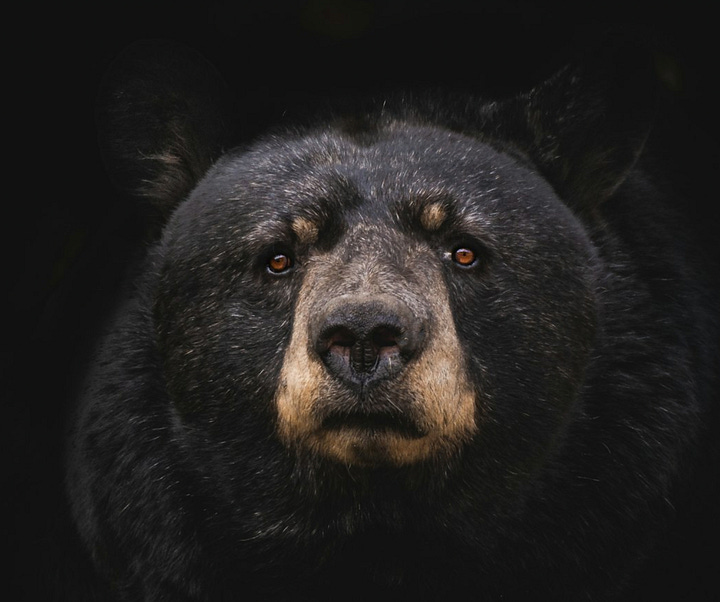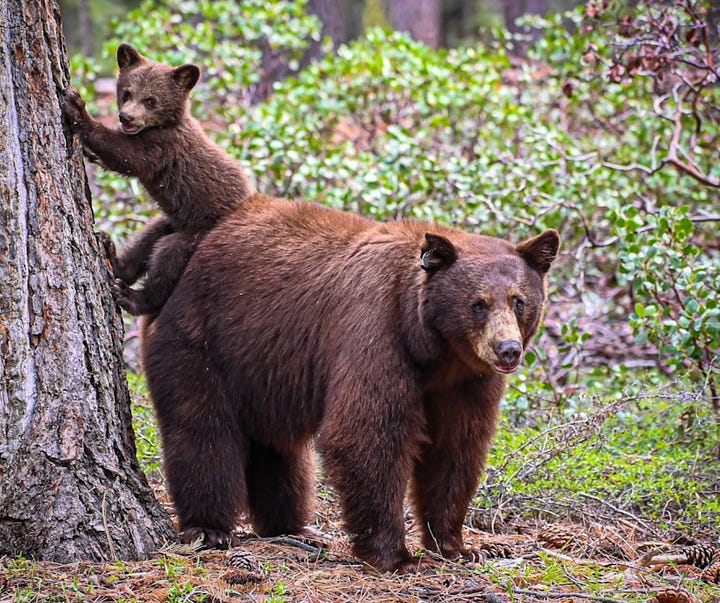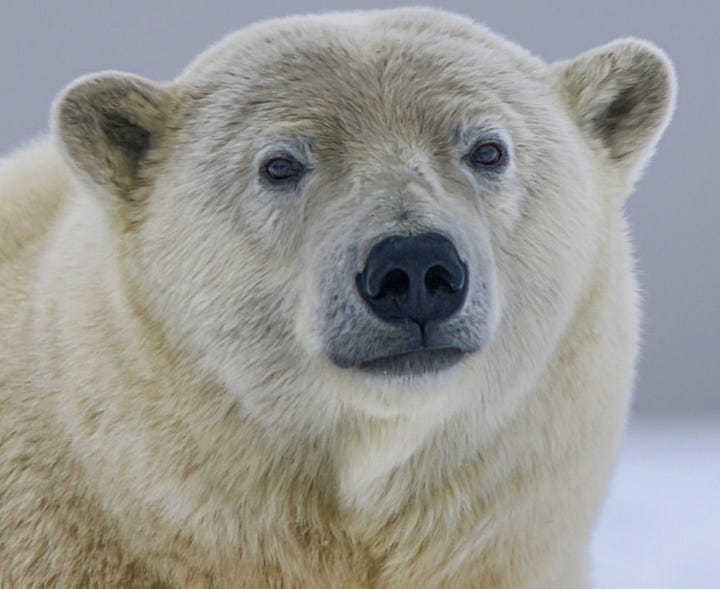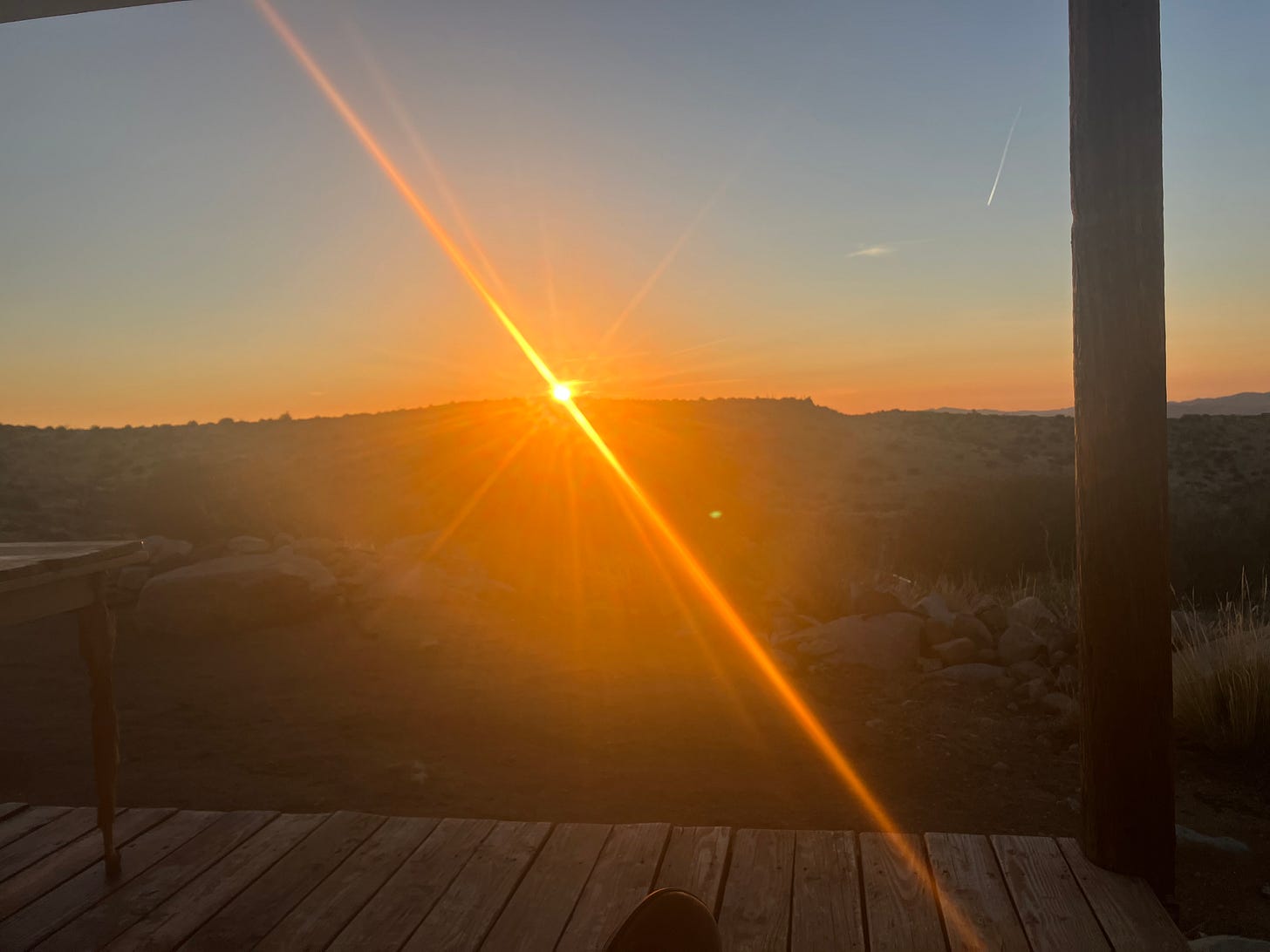



It’s spring time again at Dos Palomas. Sitting on the porch this morning witnessing the seasonal equilibrium firsthand, I find myself reflecting on the beautiful synchronicity of three awakenings: the earth's seasonal rebirth at the spring equinox, my personal new year as I celebrate another trip around the sun, and another of my favorite enlightened omnivores, the bear, freshly emerging from their winter slumber.
In recent weeks, there’s been a black bear in my desert neighborhood, and he’s been causing quite the stir. Newly awake from his winter hibernation, disoriented and hungry, he’s harassing homes and overturning garbage cans. One post on my neighborhood Facebook Group showed images of a broken kitchen window, ransacked pantry, and a refrigerator ripped open, leftovers and produce splattered across the floor. A neighbor’s chicken coop was splintered and emptied of his prized laying hens.


While my neighbors might disagree, I can't help but feel a kinship with this disoriented but determined creature.
Technically, bears don’t hibernate. Instead, they enter a state called “torpor.” After months of consuming up to 20,000 calories a day, bears find a den and settle down for a winter snooze that can last several months.
During this torpor, the bear goes through an almost magical physiological transformation. They enter a kind of airplane mode. Their heart rate slows from an average 60 beats per minute down to just ten. Their body temperature drops ten points. They won’t eat, drink, urinate, or defecate the entire time they rest. Miraculously, female bears give birth during hibernation, and nurse their cubs while still in this torpid state.
Not surprising, bears can lose 15-30% of their body weight during hibernation, but remarkably, they lose very little muscle mass. In fact, scientists are studying this phenomenon in human medicine, particularly to treat muscle wasting diseases and coma patients.
When the bear finally wakes up, it goes through a period of “walking hibernation.” Drunk with sleep, it staggers about–sometimes for weeks–as its metabolic function gradually returns to normal.
I have felt a connection with bears ever since watching Disney’s, The Jungle Book as a kid. Baloo’s carefree and whimsical approach to life had what I’d call, good bear energy, and his protective instincts toward Mowgli made me feel safe and open to adventure. Real bears exhibit a similar playfulness and power. Mama bears nurture their cubs and ruthlessly protect them, balancing physical might with gentleness that we humans could learn well from. I can also relate to the bear’s voracious appetite and appreciation of all kinds of foods.
In recent years, I learned how similar bears are to us humans. My butcher shop would process game animals during hunting season. One year, we receieved a responsibly hunted black bear. The anatomy was shockingly like that of a human. The skinned animal looked so much like a cadaver that I was afraid to work on it while the shop was open, fearing guests might think we were processing a delinquent customer. Surely the indigenous communities of the Northern Hemisphere realized these similarities too, and it’s no surprise that several tribes in the Pacific Northwest claimed lineage from bears or had bear clans. Other tribes had stories about bears transitioning into humans and vice versa.
Native Americans saw bears as spiritually powerful animals that could travel between realms. They were the embodiment of introspection and inner wisdom, keepers of medicine knowledge. They could heal themselves and even shared this knowledge with medicine people.
I feel this bear energy during winter time. After the rush of the holidays, I go into a period of withdrawal, depleted by all the festivities and holiday rush. With Spring on the horizon, I awaken slowly, climbing from my cave in a state of "walking hibernation." The equinox—that celestial balance of light and dark—has added meaning because it always falls near my birthday—a cosmic reminder that my personal renewal is tied to the earth's cycles. Gradually registering all the trappings of the outside world, I emerge from winter's introspection hungry for connection and experience, a bit clumsy, I stumble determinedly toward beginning the new year again.
As bears forage for roots and bulbs, berries and nuts, insects and whatever else they can find to replenish their depleted reserves, I seek out new projects, fresh ideas, old friends, with a newfound receptivity to what my community and the world has to offer.
My Spring Invitation
Seeking the path of the enlightened omnivore, I appreciate the bear's approach to life. Their adaptability mirrors my own omnivorous flexibility. They remind me that being open to nourishment in all its forms is not just a survival strategy but a path to thriving.
And so, as I move into this Spring Season of awakening, I consider the lessons the bear might teach me:
What has been hibernating within me that's ready to emerge?
What nourishment do I need most after the long winter?
How might I balance strength with gentleness; activity with rest?
Like the bear emerging from its den, I don't need to rush into full activity. I can honor this transition time, this "walking hibernation" and give myself grace while I gradually reawaken to the world's possibilities.
Here's to spring's renewal, to birthday reflections, and to the bear energy that connects us all to earth's wisdom and our own inner knowing.








Hi Elise. Yeah, the wheel has been beckoning for a while. I’ll try to make it to one of Lenny’s classes soon. Thanks for reading!
I resonate so much with bear medicine, too! Love this piece!